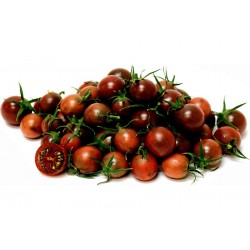Menu
-
Menuالعدمة
- Home
-
التصنيفات
-
-
التصنيفات
-
بذور الخضروات
-
أصناف حسب البلد
- أصناف من أرمينيا
- أصناف من البوسنة والهرسك
- أصناف من كرواتيا
- أصناف من فرنسا
- أصناف من ألمانيا
- أصناف من اليونان
- أصناف من المجر
- أصناف من الهند
- أصناف من إيطاليا
- أصناف من اليابان
- أصناف من شمال مقدونيا
- أصناف من بيرو
- أصناف من روسيا
- أصناف من صربيا
- أصناف من سلوفينيا
- أصناف من اسبانيا
- أصناف من تايلاند
- أصناف من تركيا
- أصناف من الولايات المتحدة الأمريكية
- بذور الطماطم
- بذور الذرة
- عائلة القرع
- الفول الأسرة
- بذور الخيار
- بذور الفلفل
- عائلة الجزرة
- عائلة البصل
- بذور الخس
- عائلة البطاطس
- عائلة الملفوف
- بذور الفجل
- عائلة الشمندر
- بذور البطيخ
- بذور بطيخ
- بذور القرنبيط
- عائلة عباد الشمس
-
أصناف حسب البلد
- بذور الفاكهة
- بذور الفلفل الحار
- بذور عشبة طبية
- تسلق بذور النباتات
- الأشجار - بذور بونساي
- بذور النخيل
- بذور الأعشاب الزينة
- بذور التبغ
-
بذور الخضروات
-
-
-
-
- منتجات جديدة
- التسليم - الدفع
- انشئ حساب
- FAQ
قائمة المنتجات من حيث العلامة التجارية Seeds Gallery
يوجد 408 منتجا.
عرض 46-60 من 408 منتجات

هذا المنتج هو أفضل منتج مبيعا

مجموعة متنوعة من روسيا
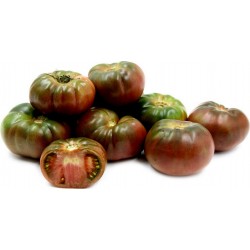
Black Krim - بذور طماطم...
السعر
1.85 €
(SKU: VT 31)
Seeds Gallery EU,
5/
5
<h2 dir="rtl"><strong>Black Krim - بذور طماطم كريمة سوداء</strong></h2>
<h2 dir="rtl"><span style="color: #ff0a0a;"><strong>ثمن عبوة من 10 بذور.</strong></span></h2>
تم ترشيحها في مجلة "عالم البستانيين" في 7 نوفمبر. تم تسميتها لشبه جزيرة القرم في البحر الأسود. يتم تسطيح الثمار قليلاً بقطر 12 سم ، مع أكتاف سوداء مخضرة داكنة ، تتحول إلى اللون الأسود تقريبًا مع ما يكفي من الحرارة والشمس. يمكن أن يصل وزن الثمار إلى 750 جرامًا.<br><br>نكهة كاملة ممتازة. طماطم ممتازة للاستخدام الطازج وكذلك للطبخ والصلصات ...<br><br>غير محدد وجاهز للحصاد في غضون 69-90 يومًا من الزرع.<br><script src="//cdn.public.n1ed.com/G3OMDFLT/widgets.js"></script>
VT 31 (10 S)

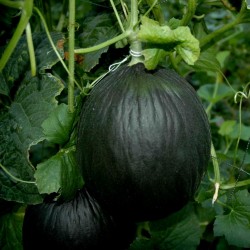
Black Melon Seeds
السعر
2.45 €
(SKU: V 47)
Seeds Gallery EU,
5/
5
<h2><strong>Black Melon Seeds</strong></h2>
<h2><span style="color:#ff0000;"><strong>Price is for pack of 10 seeds.</strong></span></h2>
<p>The fruit has good size (2 - 3 kg.). The flesh is light green, and is very sweet and tastes a little bit like the taste of pineapple. Due to black color, it's very good for the region where is not much sun and where the beautiful sunny days are rare because as we all know black attracts the sun's rays more than any other color, so that the melons ripen in record time and a lot less than all other varieties </p>
<p><a href="http://www.youtube.com/watch?v=Hje7-Pl9ryQ&feature=youtu.be" target="_blank" style="background-color:#ffffff;" rel="noreferrer noopener"><strong>http://www.youtube.com/watch?v=Hje7-Pl9ryQ&feature=youtu.be</strong></a></p>
V 47 (10 S)


نبات مقاوم للبرد والصقيع
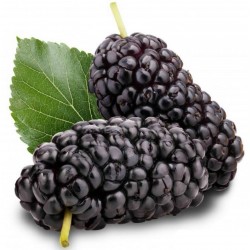
Black Mulberry Seeds (Morus...
السعر
2.95 €
(SKU: V 71 B)
Seeds Gallery EU,
5/
5
<meta http-equiv="Content-Type" content="text/html; charset=UTF-8" />
<h2><strong>Black Mulberry Seeds (Morus nigra)</strong></h2>
<h2><span style="color: #ff0000;"><strong>Price for Package of 50 seeds.</strong></span></h2>
<div>Morus nigra, the black mulberry, is a species of flowering plant in the family Moraceae, native to southwestern Asia, where it has been cultivated for so long that its precise natural range is unknown. It is known for its large number of chromosomes, as it has 154 pairs (308 individuals).</div>
<p><strong>Description</strong></p>
<p>Morus nigra is a deciduous tree growing to 12 m (39 ft) tall by 15 m (49 ft) broad. The leaves are 10–20 cm (4–8 in) long by 6–10 cm (2–4 in) broad - up to 23 cm (9 in) long on vigorous shoots, downy on the underside, the upper surface rough with very short, stiff hairs.</p>
<p>The edible fruit is dark purple, almost black, when ripe, 2–3 centimetres (0.8–1.2 in) long, a compound cluster of several small drupes; it is richly flavoured, similar to the red mulberry (Morus rubra) but unlike the more insipid fruit of the white mulberry (Morus alba).</p>
<p><strong>Cultivation and uses</strong></p>
<p>Black mulberry has long been cultivated for its edible fruit and is planted and often naturalised west across much of Europe, including Ukraine, and east into China.</p>
<p>The black (Morus nigra) and white (Morus alba) mulberries are all widespread in Pakistan, Iran, India, and Afghanistan, where the tree and the fruit are known by the Persian-derived names toot (mulberry) or shahtoot (شاه توت) (king's or "superior" mulberry). Jams and sherbets are often made from the fruit in this region.</p>
<div>
<p>The black mulberry was imported into Britain in the 17th century in the hope that it would be useful in the cultivation of silkworms (Bombyx mori). It was unsuccessful because silkworms prefer the white mulberry, but has left a legacy of large and old trees in many country house gardens. Care is needed to prevent the crushed berries from staining carpets in the houses nearby.</p>
<div>
<table cellspacing="0" cellpadding="0" border="1">
<tbody>
<tr>
<td colspan="2" width="100%" valign="top">
<p align="center"><span><strong>Sowing Instructions</strong></span></p>
</td>
</tr>
<tr>
<td valign="top" nowrap="nowrap">
<p align="center"><span><strong>Propagation:</strong></span></p>
</td>
<td valign="top">
<p align="center"><span>Seeds</span></p>
</td>
</tr>
<tr>
<td valign="top" nowrap="nowrap">
<p align="center"><span><strong>Pretreat:</strong></span></p>
</td>
<td valign="top">
<p align="center"><span>0</span></p>
</td>
</tr>
<tr>
<td valign="top" nowrap="nowrap">
<p align="center"><span><strong>Stratification:</strong></span></p>
</td>
<td valign="top">
<p align="center"><span>0</span></p>
</td>
</tr>
<tr>
<td valign="top" nowrap="nowrap">
<p align="center"><span><strong>Sowing Time:</strong></span></p>
</td>
<td valign="top">
<p align="center"><span>all year round</span></p>
</td>
</tr>
<tr>
<td valign="top" nowrap="nowrap">
<p align="center"><span><strong>Sowing Depth:</strong></span></p>
</td>
<td valign="top">
<p align="center"><span>Cover lightly with substrate</span></p>
</td>
</tr>
<tr>
<td valign="top" nowrap="nowrap">
<p align="center"><span><strong>Sowing Mix:</strong></span></p>
</td>
<td valign="top">
<p align="center"><span>Coir or sowing mix + sand or perlite</span></p>
</td>
</tr>
<tr>
<td valign="top" nowrap="nowrap">
<p align="center"><span><strong>Germination temperature:</strong></span></p>
</td>
<td valign="top">
<p align="center"><span>18-25°C</span></p>
</td>
</tr>
<tr>
<td valign="top" nowrap="nowrap">
<p align="center"><span><strong>Location:</strong></span></p>
</td>
<td valign="top">
<p align="center"><span>bright + keep constantly moist not wet</span></p>
</td>
</tr>
<tr>
<td valign="top" nowrap="nowrap">
<p align="center"><span><strong>Germination Time:</strong></span></p>
</td>
<td valign="top">
<p align="center"><span>14 - 45 days</span></p>
</td>
</tr>
<tr>
<td valign="top" nowrap="nowrap">
<p align="center"><span><strong>Watering:</strong></span></p>
</td>
<td valign="top">
<p align="center"><span>Water regularly during the growing season</span></p>
</td>
</tr>
<tr>
<td valign="top" nowrap="nowrap"> </td>
<td valign="top">
<p align="center"><br /><span><em>Copyright © 2012 Seeds Gallery - Saatgut Galerie - Galerija semena. </em><em>All Rights Reserved.</em></span></p>
</td>
</tr>
</tbody>
</table>
</div>
</div>
V 71 B (50 S)


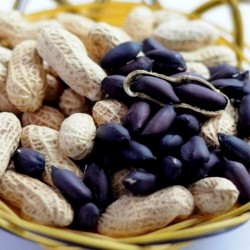
Black Peanut Seeds (Arachis...
السعر
2.25 €
(SKU: P 136 C)
Seeds Gallery EU,
5/
5
<h2><strong>Black Peanut Seeds (Arachis Hypogaea)</strong></h2><h2><span style="color:#ff0000;"><strong>Price for Package of 5 seeds.</strong></span></h2><p>110 days. <em>[Introduced 1999 by SESE from seed sent by Derek Morris.]</em> One of the varieties grown during the 1800s was the African peanut (also known as the N. Carolina peanut). It may have been a black peanut, possibly the same as ‘Carolina Black.’ According to food historian William Woys Weaver, the black peanut may have been used as a substitute for Black Bambarra (African groundnut) by the black community. Black Bambarra is important in African folk medicine as an aphrodisiac. The N. Carolina climate won’t support black Bambarra, but black peanuts grow there without difficulty. Carolina Black produces sweet-tasting, black-skinned peanuts that are slightly larger than Spanish peanuts.</p><p>The peanut, or groundnut (Arachis hypogaea), is a species in the legume or "bean" family (Fabaceae). The peanut was probably first domesticated and cultivated in the valleys of Paraguay.[1] It is an annual herbaceous plant growing 30 to 50 cm (1.0 to 1.6 ft) tall. The leaves are opposite, pinnate with four leaflets (two opposite pairs; no terminal leaflet), each leaflet is 1 to 7 cm (⅜ to 2¾ in) long and 1 to 3 cm (⅜ to 1 inch) broad.</p><p>The flowers are a typical pea flower in shape, 2 to 4 cm (0.8 to 1.6 in) (¾ to 1½ in) across, yellow with reddish veining. Hypogaea means "under the earth"; after pollination, the flower stalk elongates causing it to bend until the ovary touches the ground. Continued stalk growth then pushes the ovary underground where the mature fruit develops into a legume pod, the peanut – a classical example of geocarpy. Pods are 3 to 7 cm (1.2 to 2.8 in) long, containing 1 to 4 seeds.</p><p>Peanuts are known by many other local names such as earthnuts, ground nuts, goober peas, monkey nuts, pygmy nuts, and pig nuts. Despite its name and appearance, the peanut is not a nut, but rather a legume.</p><p><strong>Cultivation</strong></p><p>The orange-veined, yellow-petaled, pea-like flower of the Arachis hypogaea is borne in axillary clusters above ground. Following self-pollination, the flowers fade and wither. The stalk at the base of the ovary, called the pedicel, elongates rapidly and turns downward to bury the fruits several inches in the ground, where they complete their development. The entire plant, including most of the roots, is removed from the soil during harvesting.[8] The fruits have wrinkled shells that are constricted between pairs of the one to four (usually two) seeds per pod.</p><p>Peanuts grow best in light, sandy loam soil. They require five months of warm weather and an annual rainfall of 500 to 1,000 mm (20 to 39 in) or the equivalent in irrigation water.</p><p>The pods ripen 120 to 150 days after the seeds are planted. If the crop is harvested too early, the pods will be unripe. If they are harvested late, the pods will snap off at the stalk and will remain in the soil.[8] They need acidic soil to grow preferably with 5.9-7 pH.</p><p>Peanuts are particularly susceptible to contamination during growth and storage. Poor storage of peanuts can lead to an infection by the mold fungus Aspergillus flavus, releasing the toxic and highly carcinogenic substance aflatoxin. The aflatoxin-producing molds exist throughout the peanut growing areas and may produce aflatoxin in peanuts when conditions are favorable to fungal growth.</p><p>Harvesting occurs in two stages: In mechanized systems, a machine is used to cut off the main root of the peanut plant by cutting through the soil just below the level of the peanut pods. The machine lifts the "bush" from the ground and shakes it, then inverts the bush, leaving the plant upside down on the ground to keep the peanuts out of the soil. This allows the peanuts to dry slowly to a bit less than a third of their original moisture level over a period of three to four days. Traditionally, peanuts were pulled and inverted by hand.</p><p>After the peanuts have dried sufficiently, they are threshed, removing the peanut pods from the rest of the bush.</p><p><strong>Uses</strong></p><p>Peanuts have many uses. They can be eaten raw, used in recipes, made into solvents and oils, medicines, textile materials, and peanut butter, as well as many other uses. Popular confections made from peanuts include salted peanuts, peanut butter (sandwiches, peanut candy bars, peanut butter cookies, and cups), peanut brittle, and shelled nuts (plain/roasted). Salted peanuts are usually roasted in oil and packed in retail-size plastic bags or hermetically sealed cans. Dry roasted salted peanuts are also marketed in significant quantities. Peanuts are often a major ingredient in mixed nuts because of their relative cost compared to Brazil nuts, cashews, walnuts, and so on. Although peanut butter has been a tradition on camping trips and the like because of its high protein content and because it resists spoiling for long periods of time, the primary use of peanut butter is in the home. Large quantities are also used in the commercial manufacture of sandwiches, candy, and bakery products. Boiled peanuts are a preparation of raw, unshelled green peanuts boiled in brine and often eaten as a snack. More recently, fried peanut recipes have emerged – allowing both shell and nut to be eaten. Peanuts are also used in a wide variety of other areas, such as cosmetics, nitroglycerin, plastics, dyes, and paints.</p><p><strong>Peanut oil</strong></p><p>Peanut oil is often used in cooking because it has a mild flavor and a relatively high smoke point. Due to its high monounsaturated content, it is considered more healthy than saturated oils and is resistant to rancidity. There are several types of peanut oil including aromatic roasted peanut oil, refined peanut oil, extra virgin or cold-pressed peanut oil and peanut extract. In the United States, refined peanut oil is exempt from allergen labeling laws.</p><p><strong>Peanut flour</strong></p><p>Peanut flour is lower in fat than peanut butter and is popular with chefs because its high protein content makes it suitable as a flavor enhancer. Peanut flour is used as a gluten-free solution.</p><p><strong>Boiled peanuts</strong></p><p>Boiled peanuts are a popular snack in the southern United States, as well as in India, China and West Africa.</p><p><strong>Dry roasted peanuts</strong></p><p>Dry peanuts can be roasted in the shell in a home oven if spread out one layer deep in a pan and baked at a temperature of 350°F or 177°C for 18–20 minutes.</p><p><strong>Cuisine</strong></p><p><strong>South America</strong></p><p>Peanuts are used in many sauces for South American meat dishes, especially rabbits. Peanuts are common in Peruvian cuisine, which marries native and European ingredients. For instance, roasted peanuts and hot peppers, both native to South America, appear with roasted onions, garlic, and oil—all of the European origin—in a smooth sauce poured over boiled potatoes, a dish well known in the city Arequipa and called papas con ocopa. Another example is a fricassee combining a similar mixture with sautéed seafood or boiled and shredded chicken. These dishes are generally known as ajíes, meaning "hot peppers", such as ají de Pollo and ají de mariscos. (Seafood ajíes may omit peanuts.)</p><p>Likewise, during Colonial times, the Spanish in Peru used peanuts to replace nuts unavailable in Peru but used extensively in Spanish cuisines, such as almonds, pine nuts, and other nuts, typically ground or as paste and mixed with rice, meats, and vegetables for dishes such as rice pilaf.</p><p><strong>Southwest Asia</strong></p><p>Crunchy coated peanuts, called kabukim in Hebrew, are a popular snack in Israel. Kabukim are commonly sold by weight at corner stores where fresh nuts and seeds are sold, though they are also available packaged. The coating typically consists of flour, salt, starch, lecithin, and sometimes sesame seeds. The origin of the name is obscure.(It may be derived from kabuk which means nutshell or husk in Turkish.) An additional variety of crunchy coated peanuts popular in Israel is "American peanuts". The coating of this variety is thinner, but harder to crack.</p><p>Another popular Israeli peanut snack, Bamba puffs, is similar in shape to Cheez Doodles, but are made of corn and flavored with peanut butter.</p><p><strong>Southeast Asia</strong></p><p>Peanuts are also widely used in Southeast Asian cuisine, particularly Indonesia, where they are typically made into a spicy sauce. Peanuts originally came to Indonesia from the Philippines, where the legume came from Mexico in times of Spanish colonization.</p><p>Common Indonesian peanut-based dishes include gado-gado, pecel, karedok and ketoprak, all vegetable salads mixed with peanut sauce, and the peanut-based sauce for satay.</p><p>In the Indian subcontinent, peanuts are known as a light snack by themselves, usually roasted and salted (sometimes with the addition of chilli powder), and often sold roasted in pod, or boiled with salt. They are also made into little dessert or sweet snack pieces by processing with refined sugar and jaggery. Indian cuisine uses roasted, crushed peanuts to give a crunchy body to salads; they are added whole (without pods) to leafy vegetable stews for the same reason. Another use of peanut oil as cooking oil. Most Indians use mustard, sunflower, and peanut oil for cooking. Peanuts are not native to India. They are thought to have come to India from Philippines. Notably, the name of this nut in northern parts of Tamil Nadu is 'மணிலாக் கொட்டை'- slang மல்லாக் கொட்டை- (Manila-k-kottai) means nut from Manila, the capital city of Philippines.</p><p><strong>West Africa</strong></p><p>Peanuts grow well in southern Mali and adjacent regions of the Ivory Coast, Burkina Faso, Ghana, Nigeria and Senegal; peanuts are similar in both agricultural and culinary qualities to the Bambara groundnut native to the region, and West Africans have adopted the crop as a staple. Peanut sauce, prepared with onions, garlic, peanut butter/paste, and vegetables such as carrots, cabbage, and cauliflower, can be vegetarian (the peanuts supplying ample protein) or prepared with meat, usually chicken.</p><p>Peanuts are used in the Mali meat stew maafe. In Ghana, peanut butter is used for peanut butter soup nkate nkwan.[13] Crushed peanuts may also be used for peanut candies nkate cake and kuli-kuli, as well as other local foods such as oto.[13] Peanut butter is also an ingredient in Nigeria's "African salad".</p><p>Peanut powder is an important ingredient in the spicy coating for kebabs in Nigeria and Ghana.</p><p><strong>East Africa</strong></p><p>Peanuts are a common ingredient of several types of relishes (dishes which accompany nshima) eaten by the tribes in Malawi and in the eastern part of Zambia, and these dishes are now common throughout both countries. Thick peanut butter sauces are also made in Uganda to go with rice and other starchy foods. Across East Africa, roasted peanuts (often in cones of newspaper) are a popular snack sold in the street.</p><p><strong>North America</strong></p><p>In the US, peanuts are used in candies, cakes, cookies, and other sweets. They are also enjoyed roasted and salted. Peanut butter is one of the most popular peanut-based foods in the US, and for four hundred years, recipes for peanut soup have been present in the South, Virginia in particular. In some southern portions of the US, peanuts are boiled for several hours until soft and moist. Peanuts are also deep-fried, shell and all.</p><p><strong>Malnutrition</strong></p><p>Peanuts are used to help fight malnutrition. Plumpy Nut, MANA Nutrition,[14] and Medika Mamba[15] are high-protein, high-energy and high-nutrient peanut-based pastes developed to be used as a therapeutic food to aid in famine relief. The World Health Organization, UNICEF, Project Peanut Butter and Doctors Without Borders have used these products to help save malnourished children in developing countries.</p><p><strong>Other uses</strong></p><p>Peanuts can be used like other legumes and grains to make a lactose-free milk-like beverage, peanut milk. Peanut plant tops are used for hay.</p><p>Low-grade or culled peanuts not suitable for the edible market are used in the production of peanut oil for manufacturing.[citation needed] The protein cake (oilcake meal) residue from oil processing is used as an animal feed and as a soil fertilizer. Low-grade peanuts are also widely sold as a garden bird feed.</p><p>Peanuts have a variety of industrial end uses. Paint, varnish, lubricating oil, leather dressings, furniture polish, insecticides, and nitroglycerin are made from peanut oil. Soap is made from saponified oil, and many cosmetics contain peanut oil and its derivatives. The protein portion is used in the manufacture of some textile fibers. Peanut shells are used in the manufacture of plastic, wallboard, abrasives, fuel, cellulose (used in rayon and paper) and mucilage (glue). Rudolf Diesel ran some of the first engines that bear his name on peanut oil[16] and it is still seen as a potentially useful fuel.</p><p>Plant Common Name: Peanut seeds</p><p>Plant Genus/Species Name: Arachis hypogaea</p><p>Sowing Temperature: 16 - 26 Celcius</p><p>Growing Temperature: 8 - 38 Celcius</p><p>Days to Maturity: 60-80 Days</p><h2><span style="color:#008000;"><strong>How to Sow Peanut</strong></span></h2><p>Peanuts need a long, hot growing season to fully mature. Do not plant in areas that do not have at least 4-5 months of frost-free weather. Shell the seeds before sowing. In loose, well-drained soil in a sunny location, sow seeds directly outdoors after the last frost. Plant in light deeply dug and prepared alkaline soil. Create a furrow 2" deep and sow seeds 4-6" apart, being careful not to damage the tender seeds. Space rows 3' apart. Seeds germinate in 10-15 days.</p><script type="text/javascript"></script>
P 136 C


متنوعة من الولايات المتحدة الأمريكية
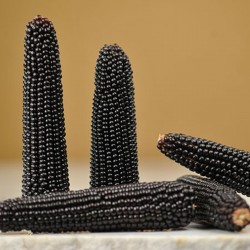
Black Popcorn Corn Dakota...
السعر
2.15 €
(SKU: VE 127 (1.1g))
Seeds Gallery EU,
5/
5
<h2><strong>Black Popcorn Corn Dakota Seeds</strong></h2>
<h2><span style="color: #ff0000;" class=""><strong>Price for Package of 9-15 (1,1g) seeds. </strong></span></h2>
<p>One of the earliest maturing corns and easiest to grow. 150 cm high plants. Dark black kernels have a ruby-red, glassy shine when held in the right angle of light. The pointy kernels pop bright white with a small black hull still attached. The flavor is delicious, hearty and crunchy. Many popcorns lack this richness, which gives Dakota Black the ability to act as a meal all by itself. Easy to grow, fruits ripening after 90 - 105 days.</p>
<p>Location: sun, half shadow</p>
<p>Life form: annual</p>
<p>Height: 150 cm (60 in)</p><script src="//cdn.public.n1ed.com/G3OMDFLT/widgets.js"></script>
VE 127 (1.1g)

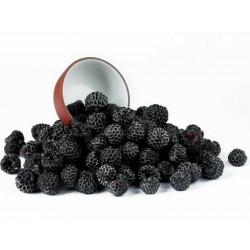
Black Raspberry Seeds...
السعر
2.25 €
(SKU: V 144 B)
Seeds Gallery EU,
5/
5
<h2 style="font-family: 'Helvetica Neue', Helvetica, Arial, sans-serif; color: #333333;"><strong>Black Raspberry Seeds (Rubus occidentalis)</strong></h2>
<h2 style="font-family: 'Helvetica Neue', Helvetica, Arial, sans-serif; color: #333333;"><span style="color: #ff0000;" class=""><strong>Price for Package of 40 (0,1g) seeds.</strong></span></h2>
<p>Rubus occidentalis is a species of Rubus native to eastern North America. Its common name black raspberry is shared with the closely related western American species Rubus leucodermis. Other names occasionally used include wild black raspberry, black caps, black cap raspberry, thimbleberry, and scotch cap.</p>
<p>Rubus occidentalis is a deciduous shrub growing to 2–3 m (7–10 feet) tall, with prickly shoots. The leaves are pinnate, with five leaflets on leaves, strong-growing stems in their first year, and three leaflets on leaves on flowering branchlets. The flowers are distinct in having long, slender sepals 6–8 mm long, more than twice as long as the petals. The round-shaped fruit is a 12–15 mm diameter aggregation of drupelets; it is edible, and has a high content of anthocyanins and ellagic acid.</p>
<p>Black raspberries are high in anthocyanins. This has led to their being very useful as natural dyes. Preliminary studies to evaluate their benefit for cancer treatment in mammalian test systems are ongoing[7] and a small-scale clinical trial has begun on patients with Barrett's esophagus.</p>
<p>The black raspberry is also closely related to the red raspberries Rubus idaeus and Rubus strigosus, sharing the distinctively white underside of the leaves and fruit that readily detaches from the carpel, but differing in the ripe fruit being black, and in the stems being more prickly. The black fruit makes them look like blackberries, though this is only superficial, with the taste being unique and not like either the red raspberry or the blackberry.</p>
<p>As suggested by the common name, black raspberries usually have very dark purple-black fruits, rich in anthocyanin pigments. However, due to occasional mutations in the genes controlling anthocyanin production, yellow-fruited variants ("yellow raspberries") sometimes occur, and have been occasionally propagated, especially in home/farm gardens in the midwestern United States (e.g., Ohio). The yellow-fruited variants of the black raspberry retain that species' distinctive flavor, different from the similar-appearing pale-fruited variants of cultivated red raspberries (generally the Eurasian Rubus idaeus, but with some being the North American Rubus strigosus, and other cultivars representing hybrids between these two widespread species).</p>
<p><strong>Commercial growing and processing</strong></p>
<p>The center for black raspberry production is in the Willamette Valley in Oregon. The main cultivar, 'Munger', is grown on about 600 ha (1500 acres). Other cultivars include 'John Robertson', 'Allen', 'Jewel', 'Blackhawk', 'Macblack', 'Plum Farmer', 'Dundee', 'Hanover', and 'Huron'. The plants are summer tipped by hand, mechanically pruned in winter and then machine harvested. The yields are generally low per acre and this is why the fruits are often expensive.</p>
<p>The species has been used in the breeding of many Rubus hybrids; those between red and black raspberries are common under the name purple raspberries; 'Brandywine', 'Royalty', and 'Estate' are examples of purple raspberry cultivars. Wild purple raspberries have also been found in various places in northeastern North America where the two parental species co-occur and occasionally hybridize naturally.</p>
<p>The berries are typically dried or frozen, made into purées and juices, or processed as colorants. Fresh berries are also marketed in season. Two well-known liqueurs based predominantly on black raspberry fruit include France's Chambord Liqueur Royale de France and South Korea's various kinds of Bokbunja (see Korean alcoholic beverages).</p>
<p> </p><script src="//cdn.public.n1ed.com/G3OMDFLT/widgets.js"></script>
V 144 B (0.1g)

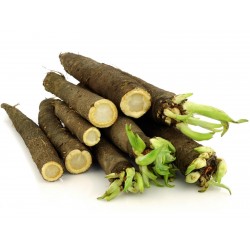
Black Salsify Seeds...
السعر
1.95 €
(SKU: VE 129)
Seeds Gallery EU,
5/
5
<div id="idTab1" class="rte">
<h2><strong>Black Salsify Or Spanish Salsify Seeds</strong></h2>
<h2><span style="color: #ff0000;"><strong>Price for Package of 15 seeds.</strong></span></h2>
<p>Scorzonera hispanica, black salsify or Spanish salsify, also known as black oyster plant, serpent root, viper's herb, viper's grass or simply scorzonera, is a perennial member of the genus Scorzonera in the sunflower family (Asteraceae), cultivated as a root vegetable in the same way as salsify (Tragopogon porrifolius), also in the sunflower family.</p>
<p>The scorzonera sweet is a crystallized dessert made from scorzonera in Évora, Alentejo, Portugal. It is listed on the Ark of Taste.</p>
<p><strong>Description</strong></p>
<p>The black salsify plant has heads of yellow ray flowers. The thin black taproot grows up to one meter long and up to 2 centimetres (0.8 in) in diameter. It has a black skin with white internal flesh.</p>
<p><strong>History</strong></p>
<p>Black salsify is native to Southern Europe and the Near East. As is indicated by its binomial name, it is generally thought to have spread to the rest of Europe from Spain, but the first mention of the vegetable by a Western writer came from Leonhard Rudolf, who reported seeing scorzonera at the market of Aleppo in Syria, in 1575. Although it is often claimed that the name of the genus Scorzonera probably derives from the Old French word scorzon, meaning snake (or "adder" to be exact), it is more likely that the name is derived from the Italian "scorza negra" meaning "black bark"/"black peel" and obviously indicating the dark brown to black skin of the root. The Celtic and Germanic peoples are believed to have eaten the black salsify, which was considered efficacious against the bubonic plague and snake bites until the 16th century. The plant was being cultivated as a vegetable in Italy and France by 1660 and, soon after, the Belgians were growing vast fields of it.</p>
<p><strong>Food value</strong></p>
<p>The black salsify is considered nutritious: it contains proteins, fats, asparagine, choline, laevulin, as well as minerals such as potassium, calcium, phosphorus, iron, sodium, and vitamins A, B1, E and C. It also contains the glycoside inulin, conferring a mild sweetness that is suitable for diabetics.</p>
<p><strong>Preparation</strong></p>
<p>The thick black skin of the salsify root is usually considered inedible and can be removed either prior to or after boiling. If the skin is removed prior to boiling, the peeled root should be immediately immersed in water mixed with vinegar or lemon juice, in order to prevent discolouring. Since the root contains an extremely sticky latex, it is often more convenient to peel it after boiling the root for 20 to 25 minutes (or less).</p>
<p>Black salsify is often eaten together with other vegetables, such as peas and carrots. But it is also popular served like asparagus in a white sauce, such as bechamel sauce or mustard sauce. Boiled salsify roots may also be coated with batter and deep fried.</p>
<p><strong>Cultivation</strong></p>
<p>Black salsify is hitherto mainly a European crop. Belgium, France and the Netherlands are the world's largest producers of black salsify; significant amounts are also produced in Germany. In the latter country, 'Hoffmanns Schwarzer Pfahl' is a cultivar widely used by commercial growers, while 'Duplex' is popular among small-scale gardeners. Some other cultivars are widely available, but because it was rather a localized crop before being produced for a wider market there are comparatively few landraces.</p>
<p>Harvesting is somewhat complicated, as the roots are quite fragile, and broken material loses freshness. Entire roots will keep fresh all winter if stored in a cool dark place, due to their robust black corky skin. In root cellars they may keep fresh well into springtime. It is, however, very hardy and will grow well in most cool-temperate climates and usually yield 15–20 metric tons of roots per hectare. In British gardens it is common to profit from its perennial character by leaving it in the ground until its roots have grown to sufficient size for harvesting; this can take two years. Commercially, it can be grown best as the year's second crop of a field.</p>
<p>Sun 09 June, 2019</p>
</div>
VE 129 (15 S)


مجموعة متنوعة من روسيا
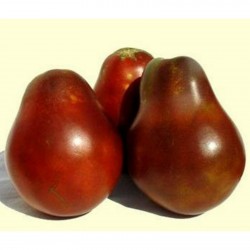
Black Truffle Tomato Seeds
السعر
5.00 €
(SKU: VT 27)
Seeds Gallery EU,
5/
5
<h2><span style="text-decoration: underline;" class=""><em><strong>Japanese Black Truffle Tomato Seeds</strong></em></span></h2>
<h3><span style="color: #ff0000;"><strong>Price for Package of 10 or 50 seeds.<br></strong></span></h3>
<div>One of the finest Heirloom Black tomato varieties we have grown, with a tear drop shape, stunning deep dark-red colour, meaty texture and fantastic complex sweet and zesty flavour. Fruits average 2 ½” diameter and the plants are extremely productive with 5-6 fruits per truss. Suitable under glass or in a warm sheltered location. Very resistant to cracking. Indeterminate.</div>
<div> </div>
<div>Sow in spring 1/16 inch deep. Germination takes around 6-14 days at 65-75F.</div>
<div>Transplant the seedlings when large enough to handle into 3 inch pots. Grow on under cooler conditions and when about 8 inches tall, either plant in their growing position in the greenhouse or gradually acclimatise them to outdoor conditions and plant out 18 inches apart in a warm and sunny spot in moist, fertile well drained soil and keep watered.</div>
<div>What's the difference between "indeterminate" and "determinate" tomatoes?</div>
<div>Determinate tomatoes, or "bush" tomatoes, are varieties that grow to a compact height (generally 3 - 4'). Determinates stop growing when fruit sets on the top bud. All the tomatoes from the plant ripen at approximately the same time (usually over period of 1- 2 weeks). They require a limited amount of staking for support and are perfectly suited for container planting.</div>
<div> </div>
<div>Indeterminate tomatoes will grow and produce fruit until killed by frost. They can reach heights of up to 12 feet although 6 feet is normal. Indeterminates will bloom, set new fruit and ripen fruit all at the same time throughout the season. They require substantial staking for support and benefit from being constrained to a central growing stem.</div><script src="//cdn.public.n1ed.com/G3OMDFLT/widgets.js"></script>
VT 27 B (50 S)


مجموعة متنوعة من روسيا
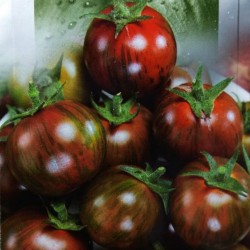
Black Vernissage Tomato Seeds
السعر
1.75 €
(SKU: VT 48)
Seeds Gallery EU,
5/
5
<h2 class=""><strong>Black Vernissage Tomato Seeds</strong></h2>
<h2><span style="color: #ff0000;"><strong>Price for Package of 10 seeds.</strong></span></h2>
<p>Tomato Black Vernissage is appreciated not only for the original coloring of the fruit but also for the fact that it contains a small percentage of purines, which cause allergies in many people. The variety was bred by Ruslan Dukhov, who lives and crosses different cultures in the village of Mishurin horn, which is located in the outback of the Dnipropetrovsk region.</p>
<p>A line of tomatoes The breeder created a whole series of Vernissage tomatoes. In 2012, for a black-yellow striped fruit, Ruslan received an award. Tomato is highly appreciated for its taste.</p>
<p>He created the pink variety of Spirits by crossing the Chinese velvet with the Moravian miracle. The bush reaches a height of one and a half meters. The fruits are tied in bunches, each of 6 tomatoes weighs from 60 to 85 g.</p>
<p>Tomatoes canned for the winter. Vernissage pink surprises with productivity. One plant produces up to 15 kg of fruit.</p>
<h3><strong>Variety features</strong></h3>
<p>All tomatoes of the Vernissage series have beautiful fruits of different colors. The indeterminate plant is grown in fields, summer cottages in Moldova, Ukraine, in the southern regions of Russia. The variety feels normal in the greenhouse. Bushes of tomatoes stretch to a height of 1.5 m, so their top is cut off. To prevent them from growing, they remove stepchildren, leaving not all the stems, but only two or three of them that are tied to the trellis.</p>
<p>The first tomato ripens 2 months after the growing season and has a round shape, pink stripes, dense skin, sweet taste, pleasant acidity.</p>
<p>6 fruits are tied in 1 bunch, no more than 4 bushes are planted per square meter. From such an area, an average of 14 kg of tomatoes is harvested. To make them larger, leave 8 brushes.</p>
<h3><strong>Pros and cons</strong></h3>
<p>Tomatoes of an unusual color look original in a jar, especially if fruits of different colors are laid in it. The advantages of the Vernissage line include:<br>great taste;<br>high productivity;<br>attractive appearance;<br>disease resistance.</p>
<p>Thanks to the dense skin, fresh tomatoes are stored in a cool room until the end of January. They do not crease, are not damaged during transportation for hundreds of kilometers.</p><script src="//cdn.public.n1ed.com/G3OMDFLT/widgets.js"></script>
VT 48 (10 S)


متنوعة من الولايات المتحدة الأمريكية
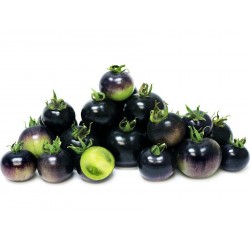
Blue Tomato Seeds "Bosque...
السعر
2.50 €
(SKU: VT 11)
Seeds Gallery EU,
5/
5
<h2><strong>Amazing Bosque Blue Tomato Seeds Organically Grown</strong></h2>
<h2><span style="color: #ff0000;"><strong>Price for Package of 10 seeds.</strong></span></h2>
<p>Parent plants were grown organically. The Bosque Blue tomato is a select strain bred here from the Oregon State Universit y P20 Blue tomato. The dark blue is t he result of antioxidant compounds (Ant hroc ynan) in the tomatoes skin, (like a blueberry), so not onl its beautiful, it is good for you! The more sun the fruit gets, the more blue color becomes. The fruit is perfect for salads, about 2" in diameter.</p>
<p>Ripe fruit in about 65- 70 days from transplant . Seeds are from open pollinated plants. You can save your seeds year after year to have the true Heirloom Tradition</p><script src="//cdn.public.n1ed.com/G3OMDFLT/widgets.js"></script>
VT 11 (10 S)


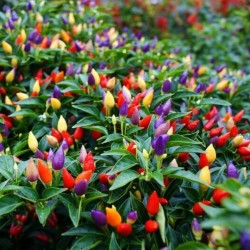
Bolivian Rainbow Chili Seeds
السعر
2.50 €
(SKU: C 37)
Seeds Gallery EU,
5/
5
<h2><span style="text-decoration:underline;"><em><strong>Bolivian Rainbow Chili Seeds</strong></em></span></h2>
<h3><span style="color:#ff0000;"><strong>Package of<strong> 10 </strong>seeds.<br /></strong></span></h3>
<div>Tear-drop shaped peppers turn from purple to yellow to orange to red with all colours present on the plant at the same time. Great container plant. Very prolific. 75 days to ripen. Heirloom variety. Grown in Bolivia. Ever bearing, 2-3 foot plants have purple foliage and flowers and yield tiny, pointed 1 inch fruits. Heat level is 6. (Capsicum annuum)</div>
C 37

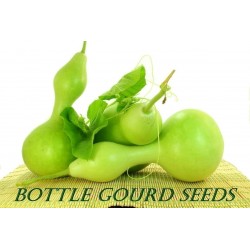
Bottle Gourd Seeds...
السعر
2.10 €
(SKU: VG 41)
Seeds Gallery EU,
5/
5
<h2><strong>Bottle Gourd Seeds (Lagenaria siceraria)</strong></h2>
<h2 class=""><span style="color: #f80000;"><strong>Price for Package of 5 seeds.</strong></span></h2>
<p>An annual climbing vine to 10m. STEM hairy and sticky. TENDRILS one-branched. LEAVES heart-shaped, to 20cmØ; stalk 12cm, 2 glands at top. FLOWERS long-stalked male and short-stalked female flowers on each plant (=monoecious), both solitary with PETALS 5, white, free, oval, to 4cm, self-compatible (=can pollinate itself).</p>
<p>FRUIT smooth, ripens yellow-green and hard-shelled, near-round to flask-shaped, 20-80cm long. SEEDS flat teardroplike, pale.</p>
<p> </p>
<p>COMMON NAMES: Bottle Gourd, Calabash Groud, Calabash Vine, White-flowered Gourd; German Flaschenkürbis</p>
<p>TRADITIONAL NAMES: ‘Ue (RR MG AT MK MT AK); Other Polynesian - Fagu (SAM)</p>
<p>GLOBAL DISTRIBUTION: NATIVE Africa; EXOTIC EXOTIC Asia, America, Oceania (incl. Eastern Polynesia)</p>
<p>COOK ISLANDS STATUS: Introduced - Polynesian, Not naturalised; S.Group - lost; N.Group - never present; Land, lowlands, gardens; on volcanic soil</p>
<p>SIGNIFICANCE LIST: ; Nationally extirpatedMedicine, Material (Container)</p>
<p>Scientific Taxonomy</p>
<p>Lagenaria siceraria (Molina)</p>
<p>SYNONYMS: Cucurbita siceraria Molina 1782; Lagenaria vulgaris; Cucurbita lagenaria Linnaeus 1753; [Lagenaria vulgaris of TC was Benincasa]</p>
<p> </p>
<p>TAXONOMY: PLANTAE; ANTHOPHYTA (=Angiospermae); MAGNOLIOPSIDA (=Dicotyledones); DILLENIIDAE; Violales; CUCURBITACEAE</p>
<p>More Information</p>
<p>SIGNIFICANCE NOTES -</p>
<p>BIODIVERSITY: Nationally extirpated. Comment: Original varieties extirpated. Varities re-introduced in early 1990s frm Hawaii also now rare or extirpated.</p>
<p>POSITIVE SIGNIFICANCE: Medicine, Material (Container). Comments: Fomerly used to make utensils, including water containers.</p>
<p> </p>
<p>GENERAL NOTE: Gourd containers were very common in Hawaii and on Easter Island, especially as water bottles, less so in New Zealand, and distinctly secondary in Cooks and French Polynesia to large coconut and bamboo containers. In Hawaii they were used to make containers for many uses, along with rattles, drums and head-masks. In most of Polynesia gourd containers were often elaborately decorated.</p><script src="//cdn.public.n1ed.com/G3OMDFLT/widgets.js"></script>
VG 41 (5 S)

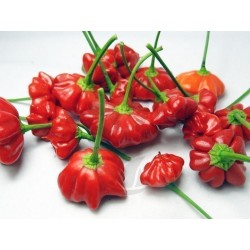
Brazilian Starfish Pepper...
السعر
2.25 €
(SKU: C 58)
Seeds Gallery EU,
5/
5
<div id="idTab1" class="rte">
<h2><span style="text-decoration:underline;"><em><strong>Brazilian Starfish Pepper Seeds</strong></em></span></h2>
<h3><span style="color:#ff0000;"><strong>Price for Package of<strong> 5 </strong>seeds.<br /></strong></span></h3>
<div>As it's name indicates, these highly sought after peppers are originally from Brazil. The unique shape of these peppers makes them a great addition to your pepper collection and garden.</div>
<div>The tall plant has a vine-like habit and produces good yields of pungent starfish shaped peppers, 1.25 to 1 inches long by 1.5 to 2 inches wide. The very attractive and distinctive white flowers produce green fruits that matures from green to bright red.</div>
<div>Plant grows to 3 feet tall by 2.5 feet wide. Branches bend down low due to the prolific fruiting characteristics of this plant. Mid-late season fruiting, Aji type, C.baccatuum.</div>
<div>Brazilian Starfish Peppers can be used Fresh (salsa, salads), for drying or pickling.</div>
<p><strong>Additional Details</strong></p>
<ul><li><strong>Family:</strong> Solanaceae (so-lan-AY-see-ee)</li>
<li><strong>Genus:</strong> Capsicum (KAP-sih-kum)</li>
<li><strong>Species:</strong> baccatum (BAK-ah-tum)</li>
<li><strong>Cultivar:</strong> Brazilian Starfish</li>
<li><strong>Category:</strong> Herbs, Annual</li>
<li><strong>Height:</strong>36-48 in (90-120 cm)</li>
<li><strong>Spacing:</strong> 18-24 in. (45-60 cm)</li>
<li><strong>Germination Time:</strong> days</li>
<li><strong>Days to Maturity:</strong> 80 +days</li>
<li><strong>Sun Exposure:</strong> Full Sun</li>
<li><strong>Heat (Pungency):</strong> Hot (5,000 to 30,000 Scoville Units)</li>
<li><strong>Bloom Color:</strong></li>
<li><strong>Bloom Time:</strong></li>
<li><strong>Fruit Shape:</strong>Flat</li>
<li><strong>Fruit Size:</strong> Small (under 2"length)</li>
<li><strong>Fruit Color:</strong> Green turning to Red</li>
<li><strong>Soil Requirements:</strong> 5.6 to 6.0 (acidic), 6.1 to 6.5 (mildly acidic), 6.6 to 7.5 (neutral)</li>
<li><strong>Propagation Methods:</strong> From seed, sow indoors before last frost or direct sow outdoors after last frost.</li>
<li><strong>Other Details:</strong> Average water needs, water regularly, do not over-water. This plant is suitable for growing in containers and/or indoor growing.</li>
</ul></div>
<div> </div>
<div> </div>
<div> </div>
C 58

- على الإنترنت فقط!
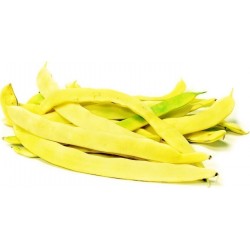
Bush Bean Seeds SUPERNANO...
السعر
1.85 €
(SKU: VE 136 (4,5g))
Seeds Gallery EU,
5/
5
<h2><strong>Bush Bean Seeds SUPERNANO GIALLO</strong></h2>
<h2 class=""><span style="color: #ff0000;"><strong>Price for Package of 10 (4,5g) seeds.</strong></span></h2>
<p>This is considered the finest of the golden yellow bush Romano/Marconi beans, and something of a 'bush' version of Marvel of Venice. Black seeded. Strong growth in nicely compact plants, rich flavor, smooth texture. Sweet and tender.</p>
<p>Botanical Name: Phaseolus vulgaris</p>
<p>Est. Maturity: 59 days</p><script src="//cdn.public.n1ed.com/G3OMDFLT/widgets.js"></script>
VE 136 (4,5g)


